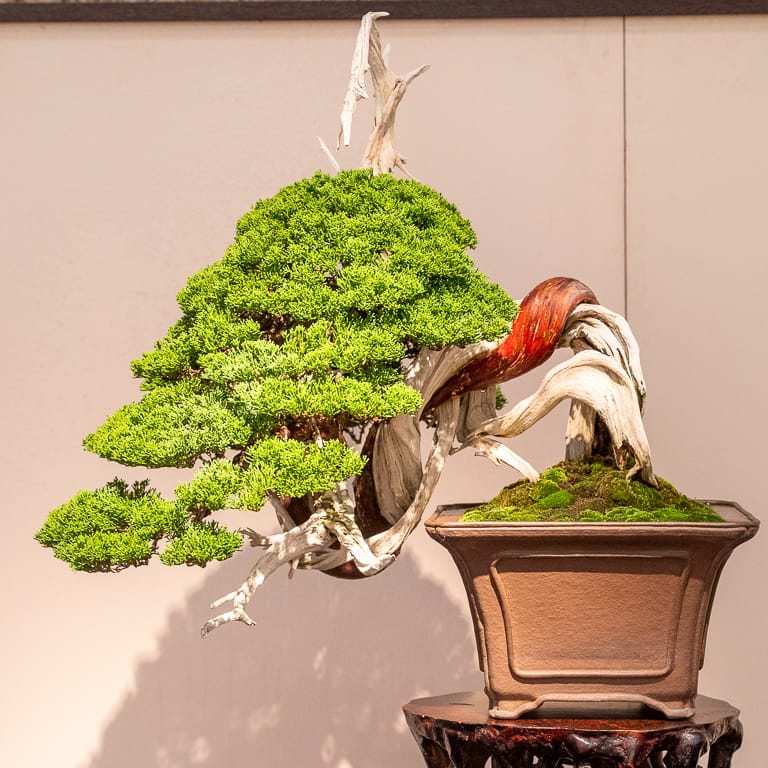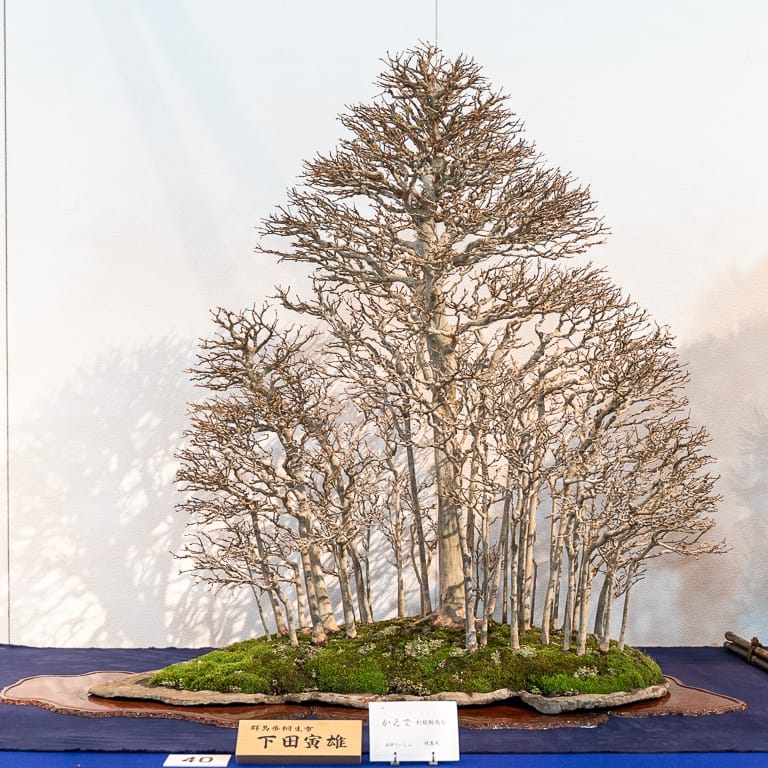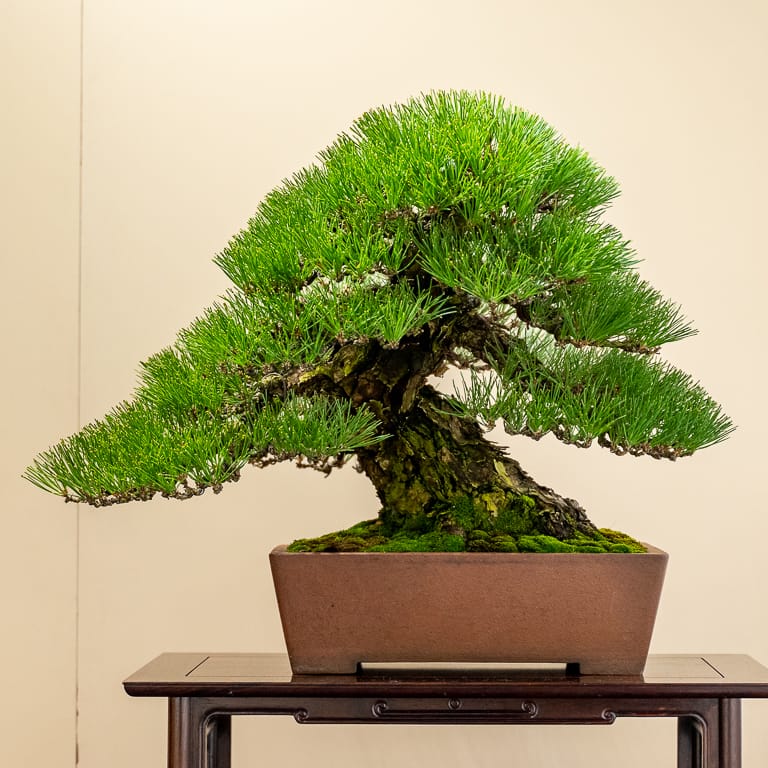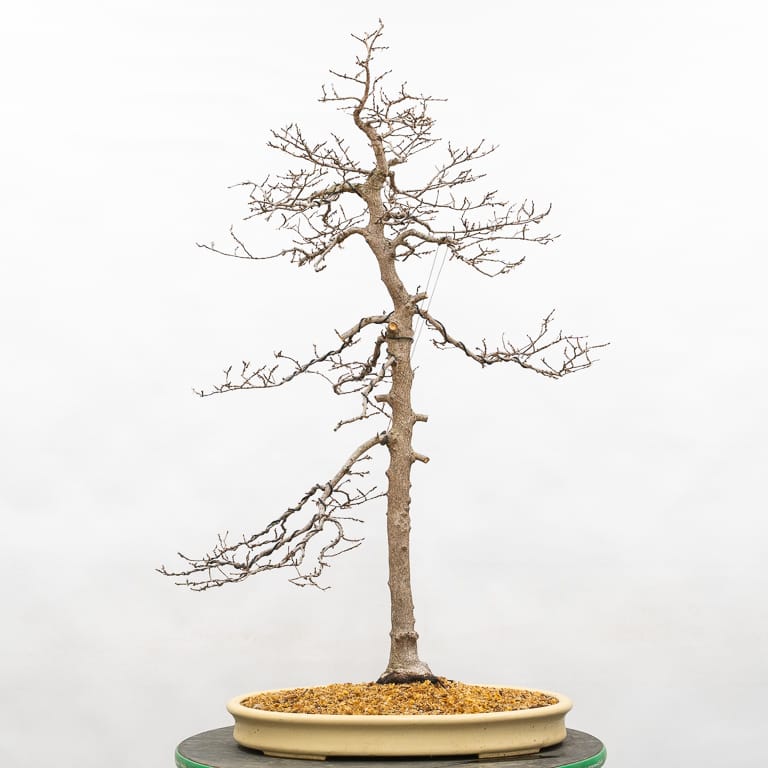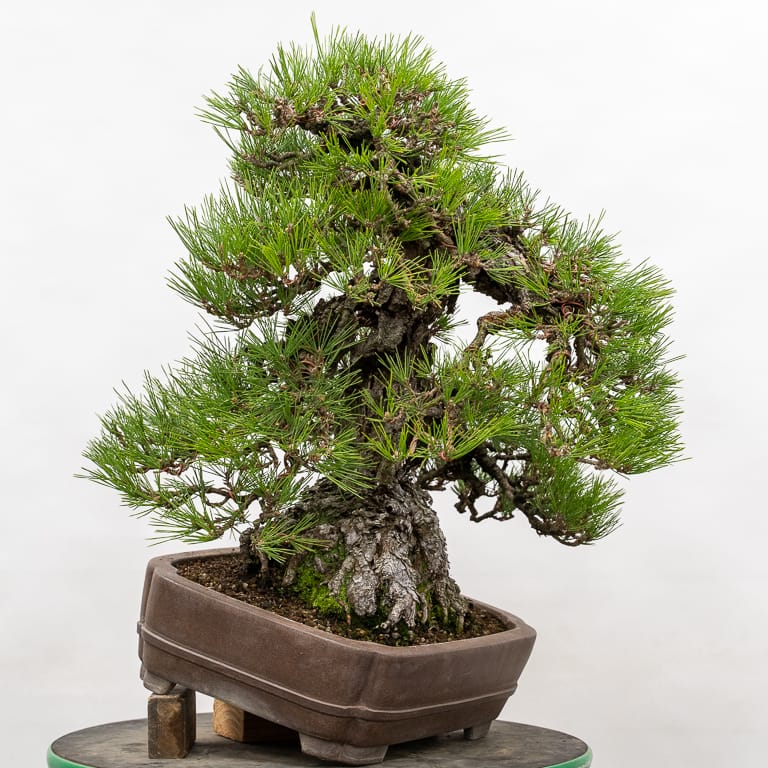You can often tell the species of a tree by its shape. The tree below could be one of three different species – needle juniper, cryptomeria, or hinoki cypress. Looking closer at the foliage,we can see this is a hinoki, a species that’s commonly styled as formal upright bonsai with highly refined branch pads. Formal […]
Styling
Styling bonsai gives trees their charm. Read the posts below to learn about the artistic decisions we make when working on bonsai.
Kokufu 101: deciduous bonsai
When designing deciduous bonsai, one of the biggest decisions is how to form the branches. Some of the key considerations are the angle at which the branches emerge from the trunk (do they go up, down, or out), the basic movement (curvy or straight), and the silhouette or outline (pointy or round) of the tree. […]
Kokufu 101: Japanese black pine
One of the most valuable aspects of a visit to the Kokufu exhibit is the opportunity to study great trees in person. Just looking at a handful of pines, for example, can reveal very different approaches to creating branch structures and silhouettes. Let’s start by looking at four medium-size trees. The first tree has very […]
Defining the branch structure on a Korean hornbeam
I often begin the styling process by considering how well the branches complement the trunk. On the Korean hornbeam below, a slender trunk supports a relatively full silhouette. Korean hornbeam Full silhouettes make sense to me on trees with more substantial trunks. This got me thinking about opportunities to improve the branch structure by reducing […]
Setting design goals for refining mature bonsai
On Tuesday, I posted an update showing fall work on a cork-bark black pine (see “Cutback” for details). Today I’d like to critique the tree and talk about design goals for future development. For reference, here’s the tree after thinning the foliage and wiring key branches. Cork-bark black pine in a Gyozan pot – 24″ […]
